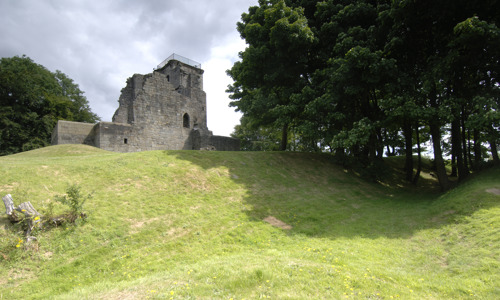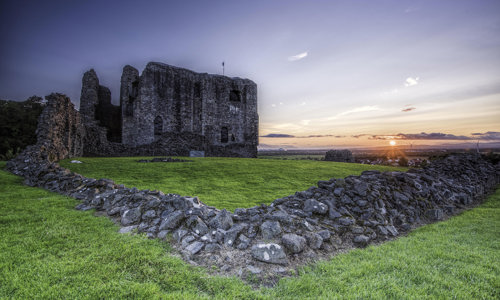History
Dumbarton Castle guards the point where the River Leven joins the River Clyde. Its recorded history goes back 1,500 years.
Back then, the place was known as Alt Clut (‘Rock of the Clyde’). Later it became known by the Gaelic name Dun Breatann (‘Fortress of the Britons’) from which the name Dumbarton is derived.
In the 1220s, the castle was a border stronghold – the Norwegian frontier lay just 10 miles downriver. The Treaty of Perth (1266) gave control of the Western Isles to the Scottish Crown, removing the threat from Norway – but an even greater menace from England soon replaced it.
Dumbarton was an important royal castle in the Middle Ages. In later centuries, Dumbarton Rock became a mighty garrison fortress, its defences packed with guns. It last saw military action as recently as the Second World War.
Citadel of the Dark Ages
Dumbarton Rock was a mighty stronghold in the Dark Ages. Waters swirl around the base of the volcanic rock, which rises almost vertical into the sky. From its twin peaks – White Tower Crag and the Beak – you can see for many miles.
Dumbarton was a great fortress and the capital of a kingdom that covered the area now known as Strathclyde.
The Rock was besieged several times. The assault by Viking kings Olaf and Ivar of Dublin in 870 was by far the worst. The pair carried off slaves and looted treasure in 200 longships following a four-month siege.
Medieval castle
Alexander II of Scotland built the medieval castle around 1220 as a defence against the threat from Norway, whose kings ruled the Hebrides and the islands in the Clyde.
In 1305, Sir John Menteith, keeper of Dumbarton Castle, caught Sir William Wallace and handed him over to the English for trial and execution.
The castle’s location away from Scotland’s political heartland lessened its importance somewhat. But it also made Dumbarton a good back door through which her rulers could come and go with relative ease. It sheltered David II (in 1333–4) and Mary Queen of Scots (in 1548) until ships could take them to France and safety.
Garrison fortress
When Mary returned to Scotland in 1561, to begin her personal reign, she landed at Leith. Dumbarton’s long and distinguished role as ‘gateway’ was over, but it remained a garrison fortress.
Substantial new artillery fortifications built in the 1600s and 1700s are what visitors see today. Nothing visible survives from the Dark Ages fortress, and precious little from the medieval castle.
Natural history
The castle rock:
- was formed some 340 million years ago
- displays some fine geological features of volcanic and glacial activity














